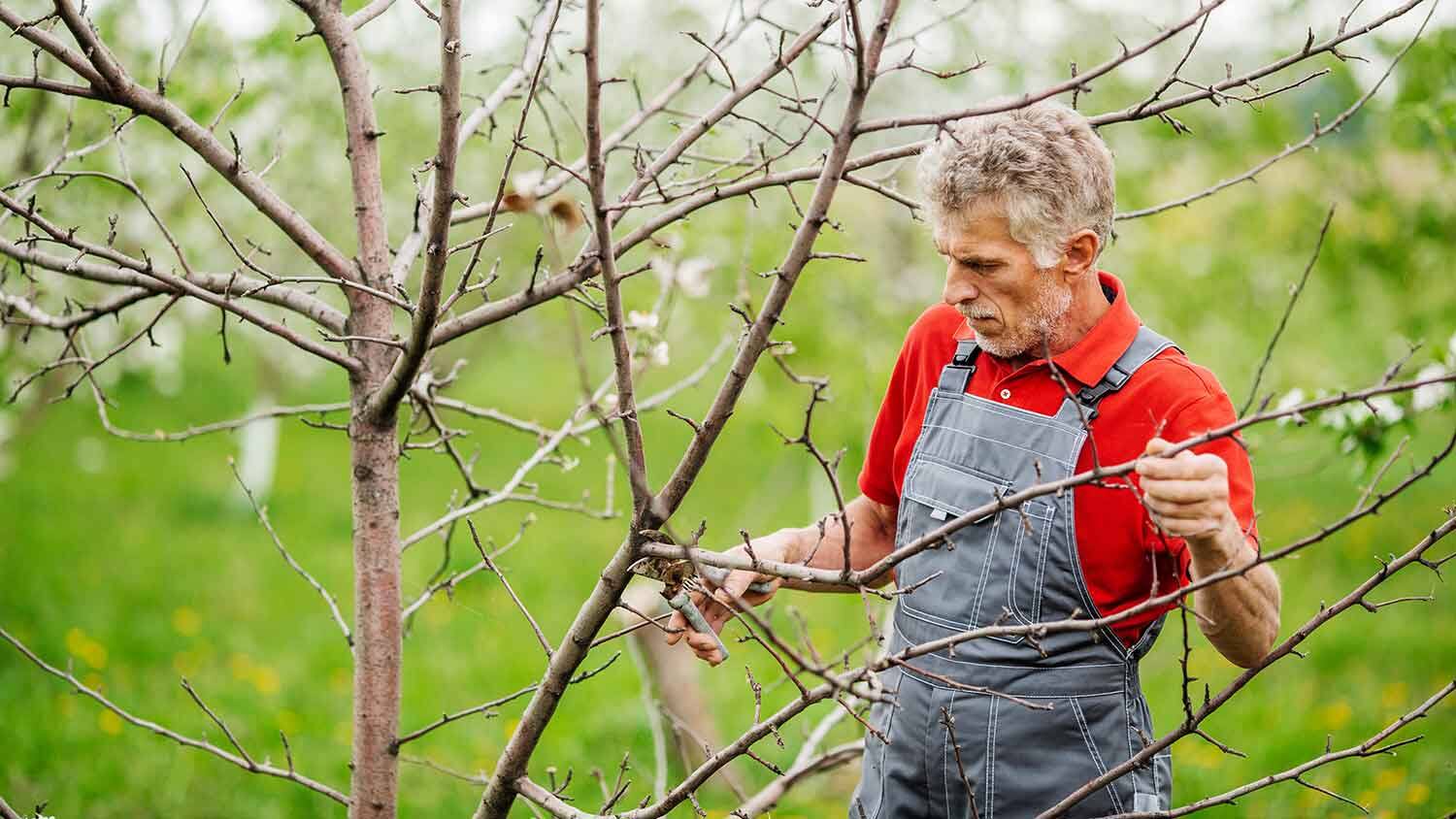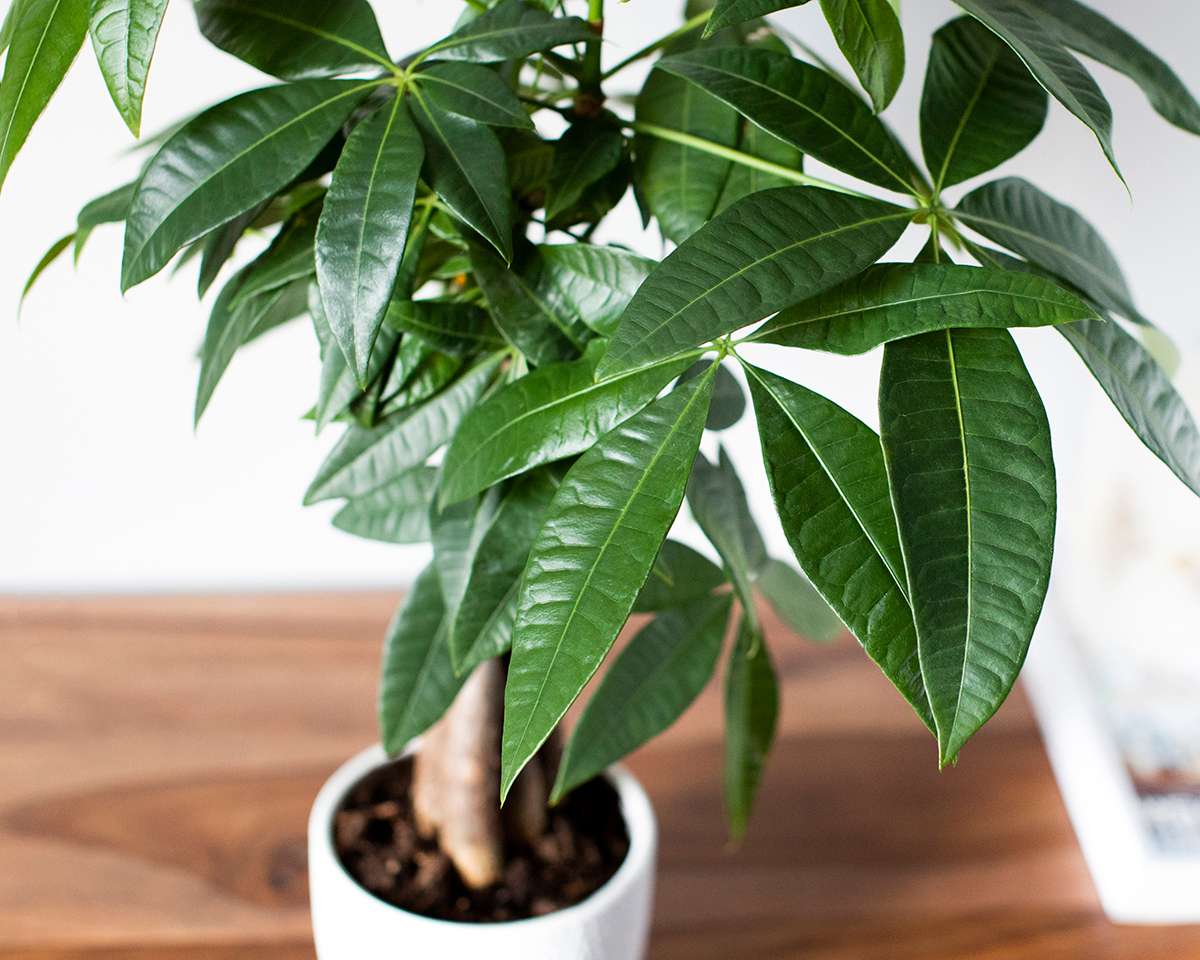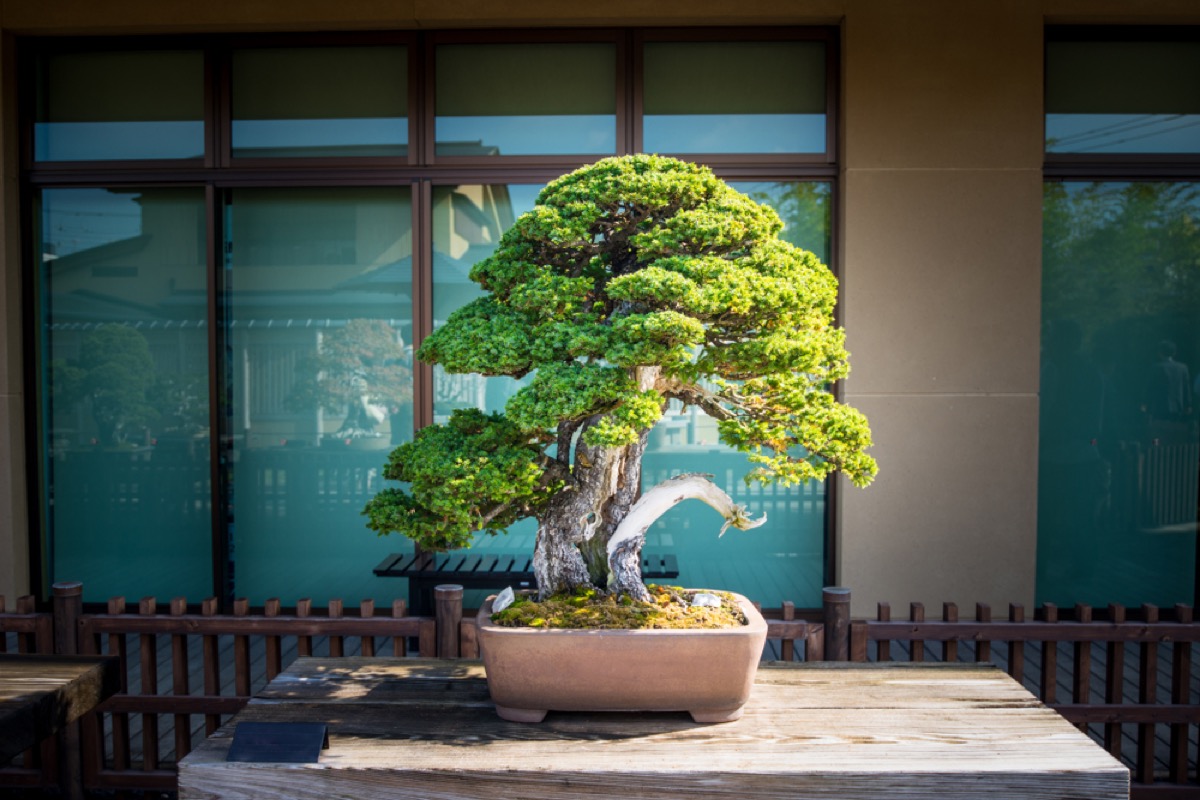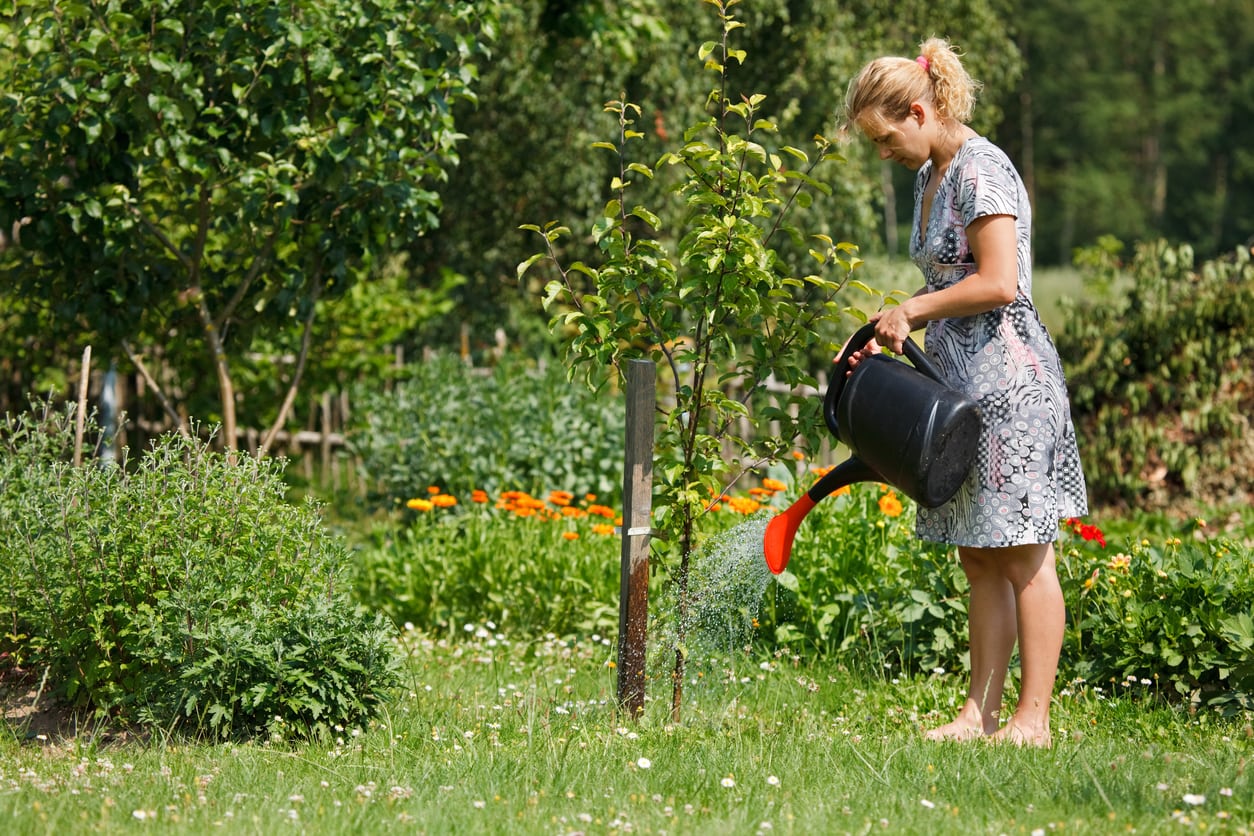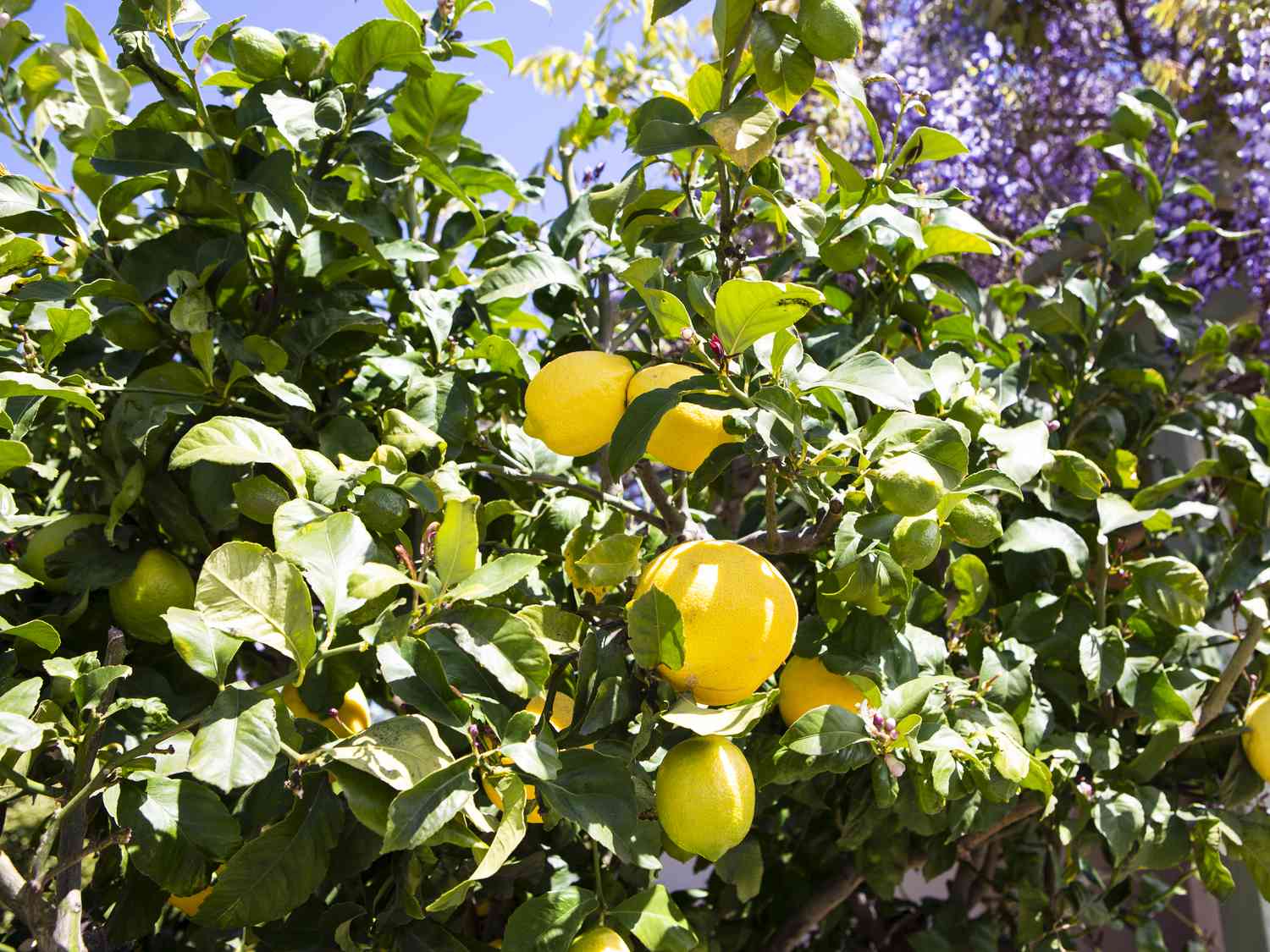Home>Types of Gardening>Edible Gardening>How Close Do Apple Trees Need To Be To Pollinate
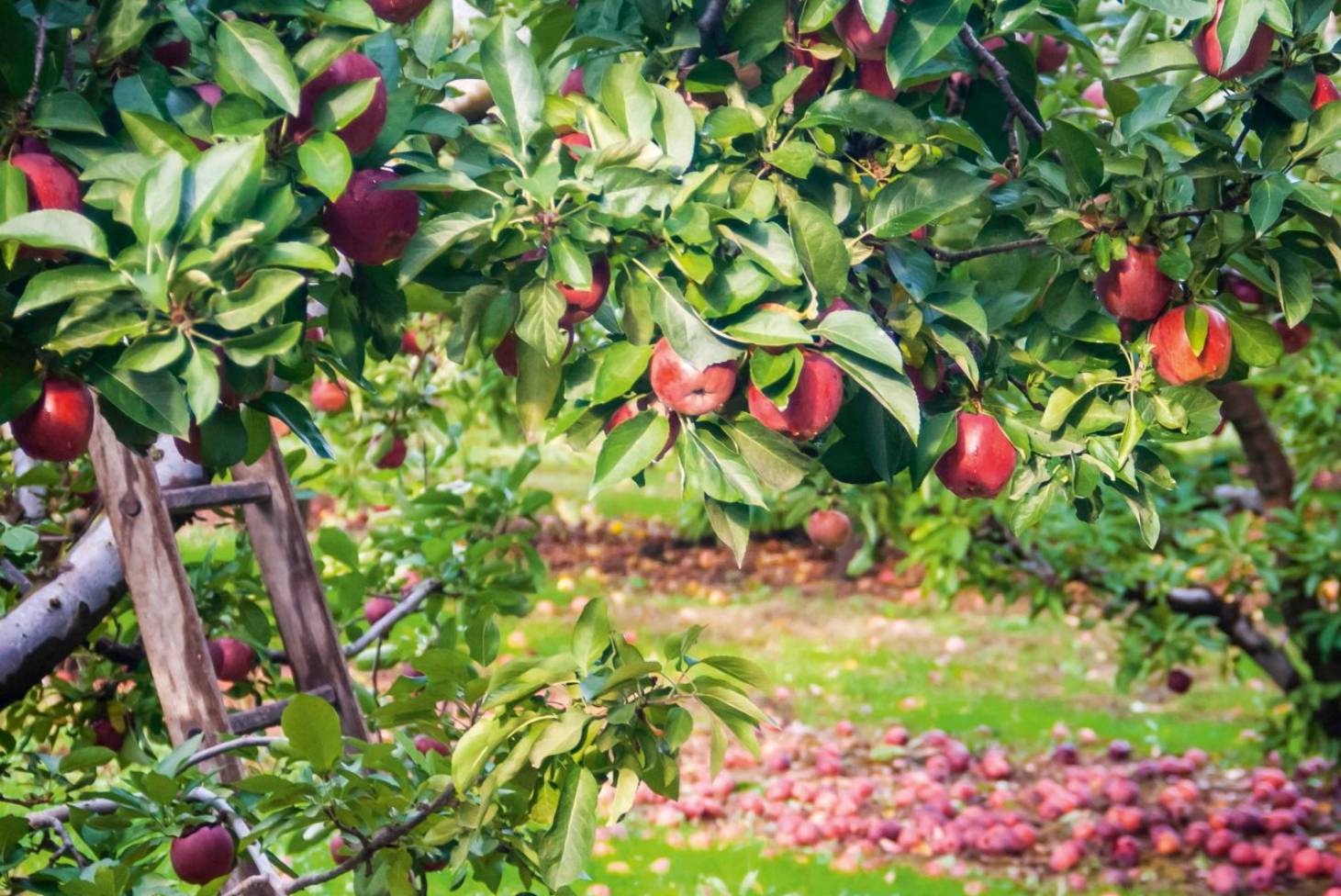

Edible Gardening
How Close Do Apple Trees Need To Be To Pollinate
Modified: January 22, 2024
Discover the optimal distance for planting apple trees in your edible garden to ensure successful pollination. Master the art of edible gardening with expert tips and guidance.
(Many of the links in this article redirect to a specific reviewed product. Your purchase of these products through affiliate links helps to generate commission for Chicagolandgardening.com, at no extra cost. Learn more)
Table of Contents
- Introduction
- The Importance of Pollination for Apple Trees
- Understanding the Pollination Process
- Factors Affecting Apple Tree Pollination
- How Close Should Apple Trees Be to Ensure Successful Pollination?
- Recommended Distances for Apple Tree Planting
- Other Tips for Maximizing Apple Tree Pollination
- Conclusion
Introduction
Welcome to the world of edible gardening, where the satisfaction of growing and harvesting your own food is unparalleled. If you’re an avid gardener or a novice looking to explore the realm of edible plants, then edible gardening is the perfect avenue for you. And what better way to start than by delving into the world of apple trees?
Apple trees not only provide delicious and nutritious fruit, but they can also add beauty and charm to your garden. However, growing apple trees requires careful consideration and knowledge, especially when it comes to pollination. Understanding the intricacies of pollination is crucial to ensure the successful growth of your apple trees and the production of bountiful fruit.
In this comprehensive guide, we will explore the importance of pollination for apple trees, the process of pollination, factors affecting pollination, and most importantly, how close apple trees should be planted to optimize pollination. So, let’s dive in and uncover the secrets of apple tree pollination.
The Importance of Pollination for Apple Trees
Pollination is a vital process for the successful growth and fruit production of apple trees. It is the transfer of pollen from the male reproductive organ (the stamen) to the female reproductive organ (the pistil) of flowers. This transfer fertilizes the ovules, leading to the development of seeds and the formation of fruit.
Apple trees are not self-pollinating, which means they require cross-pollination from another apple tree to produce fruit. The process of cross-pollination involves the transfer of pollen from one apple tree to the pistil of another tree of a different apple variety. This diversity in pollen sources ensures genetic variation and results in healthier and more robust fruit production.
Not only does pollination result in fruit production, but it also improves the overall quality and flavor of the apples. Cross-pollination allows for a wider range of genes to be mixed, creating apples with unique characteristics and flavors. It also increases the likelihood of fruit setting, as the presence of compatible pollen stimulates the development of the fruit.
Additionally, pollination is essential for the sustainability of apple tree populations. It facilitates the reproduction and propagation of apple varieties, ensuring the continued existence of diverse genetic traits. Without pollination, apple trees would struggle to reproduce and would eventually decline in numbers.
Bees and other pollinating insects play a crucial role in apple tree pollination. They visit flowers in search of nectar and inadvertently transfer pollen from one flower to another. By attracting bees to your garden and providing them with a diverse range of flowering plants, you can encourage effective pollination and improve the yield of your apple trees.
By understanding the importance of pollination for apple trees, you can take the necessary steps to ensure a successful harvest. In the following sections, we will explore the pollination process in more detail and discuss the factors that can affect apple tree pollination.
Understanding the Pollination Process
Pollination is a complex and fascinating process that takes place within the flowers of apple trees. To understand it better, let’s break down the steps involved:
- Flower Structure: Apple trees produce flowers that contain both male and female reproductive organs. The stamen contains the pollen, while the pistil consists of the stigma, style, and ovary.
- Pollen Release: When the apple tree flowers reach a certain stage of maturity, the anthers on the stamen release the pollen grains.
- Pollen Transfer: Pollen can be transported from the anthers to the stigma in several ways. Bees and other pollinators play a significant role in this process, as they collect nectar and inadvertently brush against the anthers, picking up pollen grains that stick to their bodies. When they visit another flower, some of the pollen is transferred to the stigma, fertilizing the flower.
- Fertilization: Once the pollen reaches the stigma, it travels down the style and enters the ovary. This fertilizes the ovules, which will eventually develop into seeds.
- Fruit Formation: The fertilized ovules in the ovary develop into seeds, while the surrounding tissue of the ovary begins to grow and mature, forming the fruit we know as apples.
It’s important to note that not all flowers on an apple tree will produce fruit. Some flowers may not receive proper pollination due to a lack of compatible pollen sources or insufficient pollinator activity. These unpollinated flowers may drop off the tree early on, a natural thinning process that reduces competition for resources and helps the remaining fruit reach its full potential.
The timing of pollination is also crucial. Apple tree flowers are receptive to pollen for a limited period, known as the blooming period. During this time, the stigma on the pistil is moist and sticky, making it easier for the pollen grains to adhere and fertilization to occur. Proper timing and synchronization between different apple tree varieties are essential to ensure successful pollination.
Now that we have a better understanding of the pollination process, let’s explore the factors that can affect apple tree pollination in the next section.
Factors Affecting Apple Tree Pollination
Several factors can influence the pollination process of apple trees and ultimately affect the fruit set and quality. It’s important to consider these factors when planning your apple tree garden to optimize pollination and maximize your harvest. Let’s take a closer look at some of these key factors:
- Variety Selection: Different apple tree varieties have varying bloom times and compatible pollination partners. It’s crucial to choose apple tree varieties that bloom around the same time and have overlapping blooming periods. This ensures that the flowers are receptive to pollen at the same time, increasing the chances of successful cross-pollination.
- Pollen Source: The proximity of suitable pollen sources plays a significant role in apple tree pollination. Bees and other pollinators have a limited flight range, so it’s important to have compatible apple tree varieties within close proximity for effective cross-pollination.
- Pollinator Activity: The presence of pollinators, such as bees, butterflies, and other beneficial insects, is crucial for the pollination process. Creating a pollinator-friendly garden with a variety of flowering plants will attract and support these important pollinators, ensuring they are present when your apple trees are in bloom.
- Weather Conditions: Weather conditions, such as temperature, humidity, and rainfall, can significantly impact pollination. Cool and wet weather during the bloom period can impede pollinator activity and make it difficult for pollen grains to travel and fertilize the flowers. On the other hand, excessively hot or dry conditions may also hinder pollination. Aim for moderate temperatures and favorable weather conditions during the bloom period to optimize pollination.
- Pest and Disease Management: Pests and diseases can affect both the pollinators and the apple tree flowers, hampering pollination. It’s important to maintain a healthy and pest-free garden through proper pest and disease management practices. This includes monitoring for pests, using organic methods of control, and providing a suitable environment for beneficial insects.
By considering these factors and making informed choices in variety selection, garden design, and management practices, you can create optimal conditions for apple tree pollination. In the next section, we will discuss how close apple trees should be planted to ensure successful pollination.
How Close Should Apple Trees Be to Ensure Successful Pollination?
The distance between apple trees is a crucial factor in ensuring successful pollination. While the exact distance may vary depending on the specific apple tree variety and environmental conditions, there are some general guidelines to follow when it comes to spacing your apple trees:
1. Planting Multiple Trees: To ensure efficient cross-pollination, it’s recommended to plant at least two different apple tree varieties within close proximity. Ideally, these varieties should bloom around the same time to allow for effective pollen transfer between the trees.
2. Spacing: When planting multiple apple trees for pollination, maintain a distance of around 20 to 30 feet (6 to 9 meters) between them. This distance provides enough space for each tree to develop a strong root system and canopy while allowing for easy access for pollinators to transfer pollen between the trees.
3. Group Planting: Another effective technique is to plant several apple trees of different varieties in a cluster or group. This close proximity encourages cross-pollination and increases the chances of successful fertilization.
4. Observe Environmental Factors: Factors such as wind direction and topography can also influence pollination. If your garden is windy, consider planting the apple trees closer together to facilitate pollen transfer. Likewise, if your garden is sheltered or has barriers that obstruct wind flow, you may need to space the trees slightly farther apart to allow for sufficient air movement and pollen dispersal.
It’s important to note that these spacing recommendations are general guidelines and may vary depending on local climate, specific apple varieties, and the size of the mature trees. Consulting with local experts, such as nursery professionals or agricultural extension services, can provide valuable insights tailored to your specific region and circumstances.
By following these spacing recommendations and considering the environmental factors, you can create an optimal planting arrangement that encourages effective pollination and results in healthy apple tree growth and abundant fruit production.
Recommended Distances for Apple Tree Planting
When it comes to planting apple trees, spacing plays a crucial role in ensuring proper growth, airflow, and access to sunlight for each tree. The recommended distances for planting apple trees may vary depending on factors such as the rootstock used, the expected size of the mature tree, and the specific growing conditions. Here are some general guidelines to consider:
1. In-row Spacing: For in-row spacing, it is recommended to leave approximately 10 to 12 feet (3 to 3.6 meters) between each apple tree. This spacing allows for ample room for the tree to establish a healthy root system and grow to its mature size without crowding or competing for resources.
2. Between-row Spacing: When considering the spacing between rows of apple trees, allow for a distance of around 12 to 14 feet (3.6 to 4.2 meters). This spacing provides enough room for maintenance activities such as mowing, pruning, and harvesting, as well as allowing for adequate airflow and sunlight penetration to promote tree health.
3. High-Density Planting: In high-density planting systems, where multiple apple trees are planted in a smaller area using techniques like espalier or trellis systems, the spacing can be adjusted accordingly. Generally, a spacing of 6 to 8 feet (1.8 to 2.4 meters) between trees and 10 to 12 feet (3 to 3.6 meters) between rows is suitable for high-density planting.
It’s important to consider the anticipated size of the mature apple tree when spacing your trees. Smaller or dwarf apple tree varieties may require closer spacing, while larger or semi-dwarf varieties may need more generous spacing to accommodate their size.
Additionally, consider the growing conditions and environmental factors in your specific location. If your area experiences strong winds or if you have compacted soil, you may want to provide extra spacing between trees to promote air circulation and allow the roots to spread out more easily.
Ultimately, it’s essential to research the specific apple tree varieties you plan to grow and consult local gardening resources or experts for the most accurate and tailored guidance on spacing. By following these recommended distances for apple tree planting, you can create an environment that promotes healthy tree growth, efficient maintenance, and optimal fruit production.
Other Tips for Maximizing Apple Tree Pollination
While planting compatible apple tree varieties and spacing them appropriately are key factors in ensuring successful pollination, there are other tips and practices you can employ to maximize pollination and increase the chances of a bountiful apple harvest. Here are some additional strategies to consider:
1. Create a Pollinator-Friendly Garden: Plant a diverse range of flowering plants that attract pollinators throughout the growing season. Bees and other beneficial insects rely on nectar and pollen as their food source, and a garden full of blooming flowers will encourage their presence, increasing the likelihood of effective pollination.
2. Provide Water Sources: Pollinators need access to water, especially during hot and dry periods. Set up shallow dishes or bird baths filled with fresh water to provide a hydration station for bees and other pollinating insects.
3. Avoid Pesticide Use During Bloom: Some pesticides can harm or repel pollinators. To protect the health of your pollinators and encourage effective pollination, avoid using pesticides during the bloom period when flowers are open and bees are actively foraging.
4. Hand Pollination: If you are facing challenges with pollination, you can resort to hand pollination. This involves transferring pollen from the stamen to the stigma using a small brush or cotton swab. Gently brush the open flowers, ensuring the transfer of pollen between the trees.
5. Prune for Proper Airflow and Sunlight: Regular pruning helps maintain the shape and structure of the apple tree, allowing for optimal airflow and sunlight penetration. This, in turn, improves pollinator access to the flowers and creates an environment that promotes pollination.
6. Monitor Weather Conditions: Keep a close eye on weather patterns and make adjustments accordingly. If unfavorable weather, such as heavy rains or wind, coincides with the blooming period, protecting the flowers using row covers or sheltering the trees can help maintain favorable conditions for pollination.
By incorporating these tips into your gardening practices, you can enhance the pollination process for your apple trees and increase the likelihood of an abundant apple harvest. Remember, supporting pollinators and creating a diverse and thriving environment in your garden ultimately benefits not just your apple trees but all the plants and wildlife in the surrounding ecosystem.
Conclusion
In the world of edible gardening, growing apple trees can be a rewarding and fruitful endeavor. Understanding the importance of pollination and implementing strategies to maximize successful pollination is essential for the growth and productivity of your apple trees.
Through cross-pollination, apple trees can produce abundant and flavorful fruit, while also ensuring the survival and diversity of different apple varieties. By planting multiple apple tree varieties within close proximity, creating a pollinator-friendly garden, and considering environmental factors, you can optimize pollination and increase the chances of a successful harvest.
Remember to select apple tree varieties with overlapping blooming periods and compatible pollen sources, and to provide a suitable environment for pollinators to thrive. Additional practices like hand pollination, proper pruning, and monitoring weather conditions can further enhance the pollination process.
By following these guidelines and tips, you can create an ideal environment for your apple trees to flourish, leading to a beautiful and abundant apple harvest year after year. So, roll up your sleeves, grab your gardening tools, and embark on the journey of growing your own delicious apples through the wonders of pollination.
